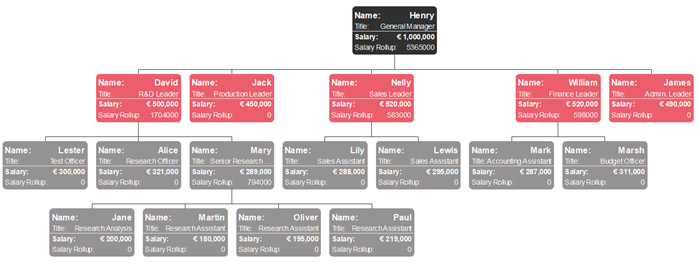A salary organizational chart displays the income of the personnel of an organization. Such organizational charts can help to facilitate the decision-making process for better human resources management. For instance, below is a salary organizational chart example for a startup (click it to enlarge). In this article, we will explain the advantages and basic drawing method of salary organization charts.
- reference: made by the easy org charting creator
Why We Need a Salary Organizational Chart?
Why a salary organizational chart is important to organizations? Here are some of the top reasons to do so:
- To evaluate the rationality of the overall salary design of an organization or department;
- Make more reasonable salary incentive plan to motivate employees;
- Help enterprises to control cost-efficiently;
- Help organizations retain their current employees, and make the recruiting, hiring and promoting process conveniently.
How to Create a Salary Organizational Chart?
Here are the essential steps you need to do:
1. Examine the Value of Every Role in Your Company
You need to check out the market pricing for a specific position (salaries may vary quite differently in terms of industries and working experiences etc.). Moreover, in some cases, you may need to pay a salary that is higher than the market value to retain key employees.
2. Decide the Increase Rate of Salary for Your Company
You should think about how much more or less salary rate increases in your organization compared to the market rate. By doing so, you can balance between providing competitive salary increases to your employees for higher positions and maintaining an affordable salary practice.
3. Check for Salary Inequalities in Your Company
Now, you should decide whether there are some employees with salary rates that are inconsistent with your organization’s overall salary level compared to the market level. Inequitable salary rates may lead to pay dissatisfaction.
4. Add Employee Shapes
Run the handy org charting creator and open a blank canvas. You can use the top menu buttons such as [insert manager], [insert subordinate], [insert assistant] to complete the basic construction of your salary organizational chart. Double click any of the shapes to edit your employee details.
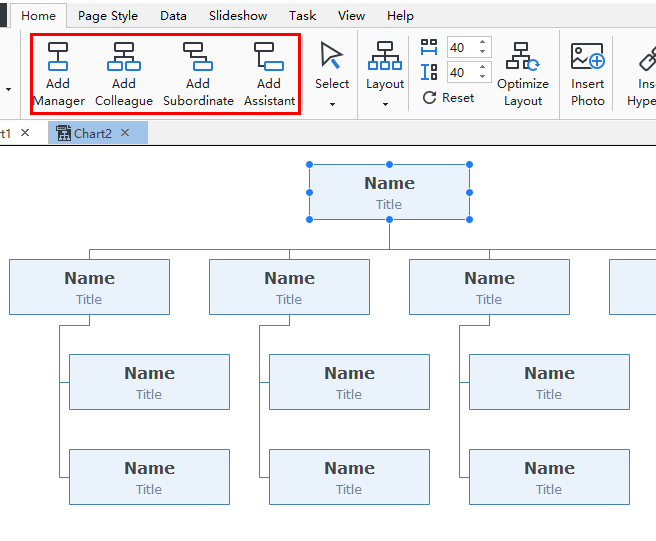
5. Select the Salary View
Click on the View Options>Salary then your current organizational chart will be shown based on employees’ salary figures. The Salary Rollup is the sum of the current employee’s subordinates’ total salary amount, (which is automatically calculated by the software).
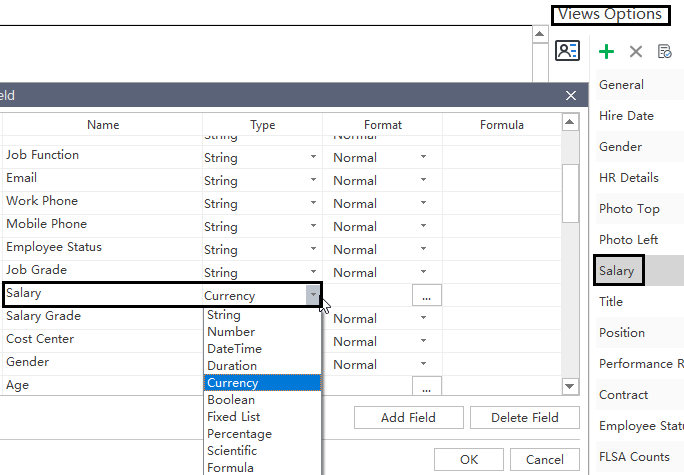
6. Customize Your Salary Organizational Chart Style
Next, you can use the built-in theme tools to change the style, font, color pattern etc. of your current salary organizational chart.
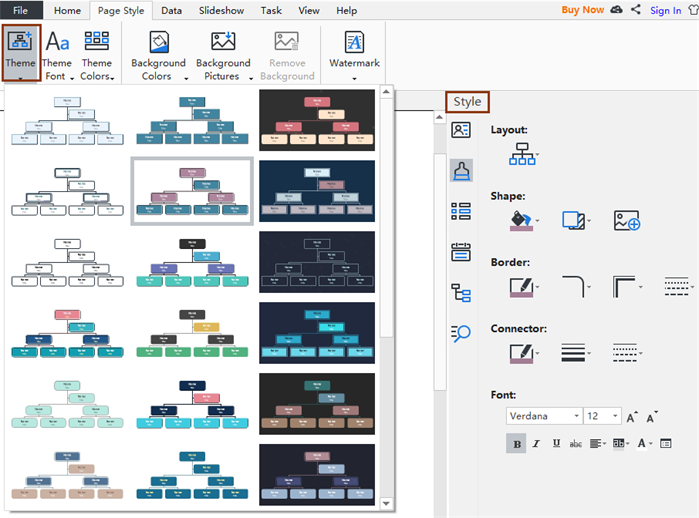
7. Exporting/Saving/Printing
Next, you can export your salary organizational charts to different formats like Graphics, PDF, MS Office, or save your file on the preset team or personal cloud.
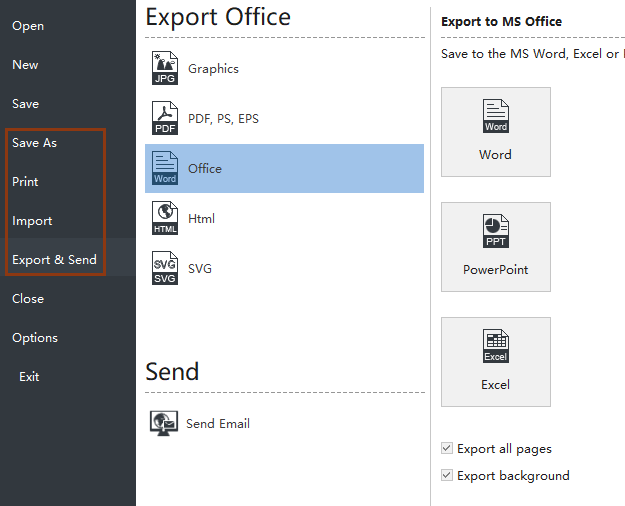
Create Your Own Salary Organizational Chart Right Now!
So far, we have discussed the key benefits and the important steps to create your salary organizational chart. Indeed, a well-structured salary organizational chart will bring great convenience to your organizational human resources management. Why not trying by yourself right now?

